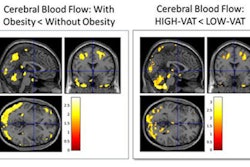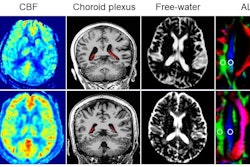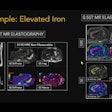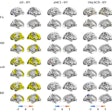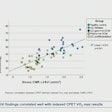Higher insulin resistance is associated with lower myelin levels in women, which could in turn show correlation between insulin resistance and the development of Alzheimer’s disease, according to findings to be presented in a poster on May 12 at the 2025 International Society for Magnetic Resonance in Medicine (ISMRM) meeting in Honolulu.
Neuroimaging studies have demonstrated an association between insulin resistance and changes in brain structures that are vulnerable to Alzheimer’s disease. However, the effects of insulin resistance on white matter, specifically myelin, are still unclear.
To investigate the relationship between insulin resistance and myelin content, a team led by Nathan Zhang, PhD, of the National Institute on Aging of the National Institutes of Health (NIH) in Baltimore assessed the white-matter microstructure in the brains of 112 cognitively unimpaired adults from the Baltimore Longitudinal Study of Aging and Genetic and Epigenetic Signatures of Translational Aging Laboratory Testing studies.
The team used multiple linear regression with the Homeostatic Model Assessment for Insulin Resistance (HOMA-IR) index calculated from fasting glucose and insulin values, and myelin water fraction (MWF) or fractional anisotropy (FA) imaging techniques.
 Associations between insulin resistance and MWF. (A) Distribution of insulin resistance, stratified by sex. (B) Regression analysis of whole-brain MWF vs. log (HOMA-IR), adjusted for age and age². Shaded regions indicate 95% confidence intervals. (C) Regression analysis of whole-brain MWF vs. log (HOMA-IR), adjusted for age, age², sex, and log (HOMA-IR) sex. Graphics and caption courtesy of Nathan Zhang, PhD, and the ISMRM.
Associations between insulin resistance and MWF. (A) Distribution of insulin resistance, stratified by sex. (B) Regression analysis of whole-brain MWF vs. log (HOMA-IR), adjusted for age and age². Shaded regions indicate 95% confidence intervals. (C) Regression analysis of whole-brain MWF vs. log (HOMA-IR), adjusted for age, age², sex, and log (HOMA-IR) sex. Graphics and caption courtesy of Nathan Zhang, PhD, and the ISMRM.
The results showed a significant negative correlation between insulin resistance and MWF in women in the whole brain, frontal lobes, and temporal lobes; men showed nonsignificant positive correlations in all brain regions. Women showed nonsignificant negative correlations in all brain regions in FA values analysis, while men showed nonsignificant positive correlations in almost all brain regions.
The authors noted that the MWF imaging marker was more sensitive than FA in showing the association between insulin resistance and myelination, with only MWF showing significant correlations with insulin resistance, although both showed “similar overall trends.” They recommended MWF be used in future investigations for its sensitivity.
With the limited number of men in the study cohort, the researchers contend that further research should involve larger cohorts to explore the influence and differences of sex on the effects of insulin resistance on myelin content.
However, they concluded that the findings showed that higher insulin resistance is associated with lower MWF in women in their study, underscoring the impact of metabolic risk factors on changes to the brain’s microstructure.
Check out AuntMinnie.com’s full coverage of ISMRM 2025 here.





